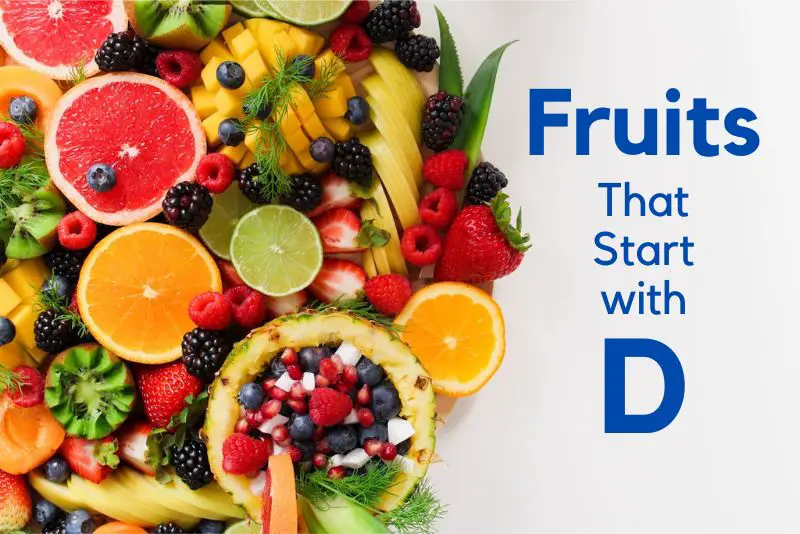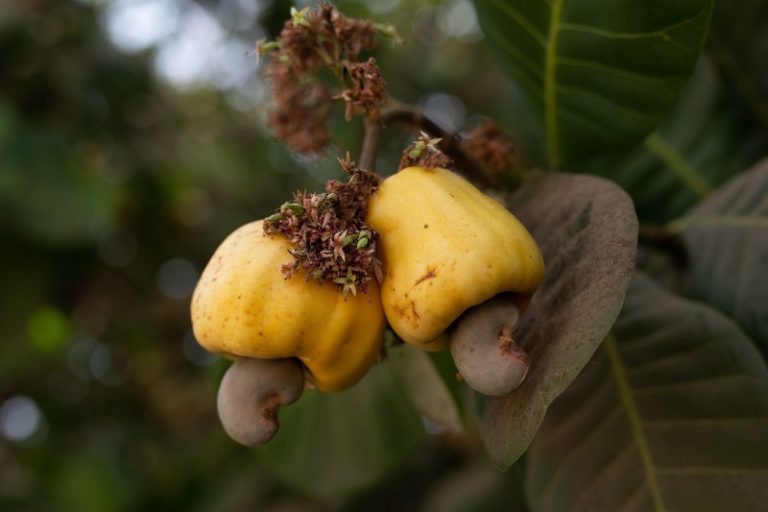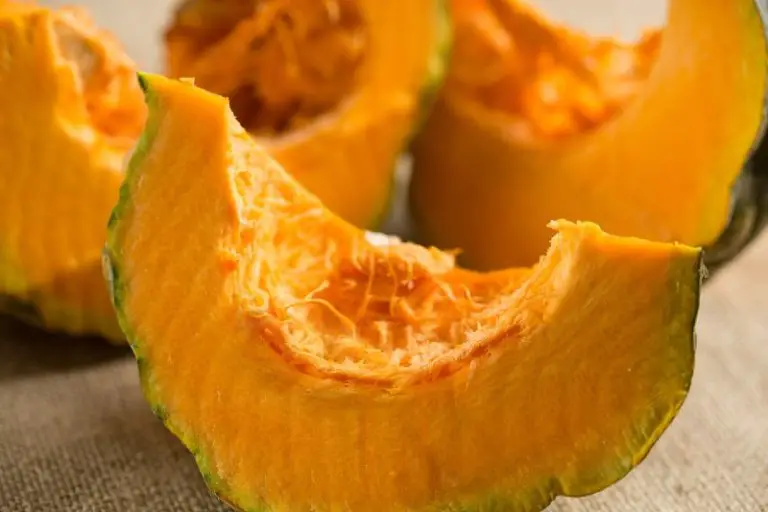Fruits That Start with D (Complete List of 40+ Fruit Names)
Fruits that start with D encompass a diverse and intriguing array of flavors, textures, and appearances. From the luscious sweetness of dates and the vibrant tang of dragonfruit to the unique aromas of durian and the refreshing juiciness of duku, these fruits offer a delightful culinary adventure.
Whether it’s the exotic appeal of desert quandong and dodder laurel or the familiar comforts of Dutch Holland pears and dewberries, fruits beginning with D showcase the incredible variety and abundance found in nature’s bounty. Let’s embark on a journey through the world of fruits that start with D and discover the unique qualities and flavors that each one has to offer.
List of Fruits Starting with D
D’Anjou Pear
D’Anjou pears are known for their juicy and sweet flavor. They have a smooth texture and a vibrant green color when ripe. These pears are versatile and can be enjoyed fresh, sliced in salads, or used in baking. They are a good source of fiber, vitamin C, and antioxidants. D’Anjou pears are widely available during the fall and winter seasons and make for a delicious and nutritious snack.
Dabai Fruit
Dabai fruit, also known as black olives, is a small fruit native to Malaysia. It has a dark purple-black skin and a creamy, buttery flesh. The fruit is rich in healthy fats and antioxidants, making it a nutritious choice. Dabai fruit is typically eaten raw or used in traditional dishes, such as curries or pickles. Its unique flavor and texture make it a favorite among locals and visitors alike.
Dabinett Apple
Dabinett apples are a popular cider apple variety originating from England. They have a balanced flavor profile, combining sweetness, acidity, and a hint of bitterness. The apples are medium-sized with a reddish-green skin. Dabinett apples are highly regarded for their use in producing high-quality ciders due to their complex flavor and tannin content. Additionally, they can also be enjoyed fresh or used in cooking and baking recipes.
Dalice Apple
Dalice apples are a relatively new apple variety known for their striking appearance. These apples have a deep red skin with crisp and juicy flesh. They offer a sweet and slightly tangy flavor, making them enjoyable as a snack or in various culinary applications. Dalice apples are versatile and can be used for baking, juicing, or adding a pop of color to salads and desserts.
Damson Plums
Damson plums are small, oval-shaped fruits with a rich purple-blue skin. They have a tart and slightly sweet flavor that intensifies when cooked or dried. These plums are often used in making jams, jellies, sauces, and baked goods. Damson plums are also known for their high pectin content, which contributes to their excellent gelling properties. With their distinct taste and deep color, damson plums are a delightful addition to both sweet and savory recipes.
Dangle Berry
Dangle berries, also known as African cucumber or horned melon, are unique fruits that originate from Africa. They have a spiky, orange-yellow skin with horn-like projections. When cut open, the fruit reveals a bright green, jelly-like flesh filled with seeds. Dangle berries have a refreshingly sweet and tangy taste, often likened to a mix of banana, cucumber, and lime. They can be eaten raw, added to fruit salads, or used as a garnish for desserts to add a touch of exotic flair.
Dangyuja
Dangyuja is a citrus fruit native to Korea and Japan. It is small, round, and has a wrinkled, orange-yellow skin. The fruit has a unique aroma and a tangy, slightly sweet taste. Dangyuja is often used to make traditional Korean teas, marmalades, and sauces. Its vibrant flavor and fragrance make it a popular ingredient in both sweet and savory dishes, adding a distinct citrusy zing.
Darling Plum
Darling plums are a type of plum with a small size and a vibrant red or purple skin. They have a juicy and sweet flesh with a hint of tartness. Darling plums are excellent for snacking and can also be used in desserts, preserves, or fruit salads. With their appealing color and delightful flavor, these plums are a delightful treat during the summer months.
Darwin’s Barberry
Darwin’s Barberry is a shrub that produces small, bright red berries. The berries have a tart and tangy taste, similar to cranberries. They are rich in antioxidants and vitamin C. Darwin’s Barberry berries are often used in making jams, jellies, and sauces, and can also be dried and used as a flavoring agent. Their vibrant color and unique flavor make them an interesting addition to various culinary creations.
Date Palm
Date palms are tall, majestic trees that bear delicious and nutritious fruits called dates. Dates are sweet and chewy with a rich caramel-like flavor. They are packed with vitamins, minerals, and fiber. Date palms have been cultivated for thousands of years and are considered a symbol of hospitality and abundance in many cultures. These versatile fruits can be enjoyed fresh, used in baking, or incorporated into a variety of dishes and desserts.
Date Plum
The date plum, also known as Diospyros lotus, is a fruit that resembles a small plum or tomato. It has a sweet and tangy flavor with a hint of tartness. The fruit is rich in vitamins, minerals, and antioxidants. Date plums are often used in jams, jellies, and desserts. They can also be eaten fresh, providing a unique and refreshing taste.
Dates
Dates are a popular fruit that grow on date palm trees in clusters. They have a wrinkled brown or golden skin and a sweet, caramel-like flavor. Dates are rich in fiber, potassium, and antioxidants. They are widely enjoyed as a natural sweetener, a quick energy snack, or a key ingredient in various Middle Eastern and Mediterranean dishes. Dates are also used in making date syrup and date paste, which are commonly used in baking and cooking.
Davidson’s Plum
Davidson’s plum is a unique fruit native to Australia. It has a dark purple skin and tart, acidic flesh. The fruit is rich in antioxidants and vitamin E. Davidson’s plums are often used in making jams, sauces, and desserts. They have a distinctive flavor that blends sweet, sour, and tangy notes, adding a delightful twist to culinary creations.
Dead Man’s Finger
Dead man’s finger, also known as monkey’s hand fruit, is a rare and exotic fruit found in some regions of Central and South America. It gets its intriguing name from its finger-like appearance. The fruit has a rough, brown skin with a soft, gelatinous interior filled with small seeds. Dead man’s finger fruit has a mildly sweet and tangy flavor. Although unusual in appearance, it is often consumed fresh or used in jellies, beverages, and cocktails.
Decaisnea
Decaisnea, also known as blue sausage fruit or dead man’s fingers, is an unusual fruit native to East Asia. It has long, cylindrical pods with a bluish-green color and a waxy texture. Inside the pods, there are translucent, jelly-like fruits that have a mild, cucumber-like flavor. Decaisnea fruits are typically eaten raw and can be enjoyed as a refreshing snack or used in salads and desserts to add a unique texture and taste.
Dekopon
Dekopon, also called Sumo citrus or Shiranui, is a type of citrus fruit originating from Japan. It is larger than a typical orange and has a bumpy, easy-to-peel skin. Dekopon has a sweet and tangy flavor, resembling a combination of orange and mandarin. The fruit is seedless and juicy, making it a popular choice for fresh consumption. Dekopon is often regarded as a premium citrus fruit due to its exceptional taste and limited availability.
Desert Banana
Desert banana, also known as yucca fruit or datil, is a fruit that grows on certain species of yucca plants in arid regions. It has a long, cylindrical shape with a yellow or greenish skin. The fruit has a starchy texture and a subtly sweet flavor. Desert bananas are commonly used in Native American cuisine, where they are roasted, boiled, or ground into flour for making bread and cakes. They are a valuable source of carbohydrates in desert environments.
Desert Fig
Desert fig, scientifically known as Ficus platypoda, is a species of fig tree found in arid regions of Australia. It produces small, round figs with a reddish-brown skin and sweet, juicy flesh. Desert figs are rich in fiber, vitamins, and minerals. They are enjoyed fresh or used in jams, preserves, and desserts. It play a significant role in the ecosystem as a food source for various animals in arid environments.
Desert King Fig
Desert King fig is a variety of fig tree known for its large, golden-yellow fruits. It has a smooth skin and a sweet, honey-like flavor. Desert King figs are juicy and have a tender texture. They are often eaten fresh, dried, or used in cooking and baking. This variety is well-adapted to desert climates, making it a favored choice for cultivation in arid regions.
Desert Lime
Desert lime, scientifically known as Citrus glauca, is a small citrus fruit native to Australia. It has a thin, greenish-yellow skin and a tart, tangy flavor. Desert limes are rich in vitamin C and antioxidants. They are used in a variety of culinary applications, including sauces, dressings, desserts, and beverages. The fruit adds a distinctive citrusy punch to dishes and is highly valued for its unique taste and versatility.
Desert Quandong
Desert quandong, also known as wild peach or native peach, is a unique fruit found in arid regions of Australia. It has a vibrant red skin and a tart, tangy flavor. Desert quandongs are often used in traditional Aboriginal cuisine, where they are dried, cooked, or made into jams and desserts. The fruit is highly valued for its nutritional content and its ability to survive in harsh desert conditions, making it an important resource for indigenous communities.
Dewberry
Dewberries are small, dark berries closely related to blackberries and raspberries. They have a sweet and slightly tart flavor with a juicy texture. Dewberries grow on trailing vines and are commonly found in wild or cultivated patches. They are enjoyed fresh, added to desserts, or used in jams and pies. Dewberries are a delightful summer treat, known for their intense berry flavor and aromatic profile.
Diablo Pear
Diablo pear, also known as red-flushed pear, is a variety of pear with a distinctive reddish skin and juicy, crisp flesh. It has a mildly sweet and refreshing flavor with hints of citrus. Diablo pears are a popular choice for fresh consumption, salads, or pairing with cheese. Their vibrant appearance and delicate taste make them an attractive addition to fruit baskets and culinary creations.
Dinosaur Eggs
Dinosaur eggs, also known as cactus fruit or pitahaya, are exotic fruits that grow on certain types of cacti. They have a vibrant, spiky skin in various colors such as pink, yellow, or green. Dinosaur eggs have a mild, subtly sweet taste with a refreshing texture filled with small black seeds. These fruits are often eaten raw, used in smoothies, or incorporated into tropical desserts. The name “dinosaur eggs” reflects their unique appearance and the sense of adventure they bring to the table.
Discovery Apple
Discovery apples are a variety of apple known for their vibrant red skin and sweet-tart flavor. They have a crisp texture and juicy flesh. Discovery apples are enjoyed as a fresh snack or used in baking, cooking, and making apple-based products like cider and applesauce. They are particularly favored for their early season harvest, providing an early taste of the apple season and adding a burst of color to fruit bowls and recipes.
Dodder Laurel
Dodder laurel, also known as laurel dodder or laurel mistletoe, is a parasitic plant that attaches itself to various host trees. It does not produce its own chlorophyll and relies on its host for nutrients. Dodder laurel has small, round berries that range in color from white to pink or red. While it is not commonly consumed by humans, dodder laurel berries serve as a food source for birds and other wildlife, contributing to the ecological balance of forest ecosystems.
Double Coconut
Double coconut, scientifically known as Lodoicea maldivica, is a species of palm tree that produces the largest seeds of any plant. The seeds, also known as coco de mer, are enormous, weighing up to 30 kilograms (66 pounds) and having a unique double-lobed shape. Double coconuts are native to the Seychelles and are considered a rare and protected species. They have a fascinating appearance and are often used as decorative pieces or displayed in botanical gardens.
Dracontomelon
Dracontomelon fruits, also known as New Guinea walnut or kepayang, are large, round fruits found in Southeast Asia. They have a thick, leathery skin that encloses a fleshy pulp surrounding a single large seed. The fruit has a tangy, sour taste and is commonly used in traditional dishes, pickles, and preserves. Dracontomelon trees are valued for their timber and are an important part of the local ecosystem.
Dragonfruit
Dragonfruit, also known as pitaya, is an exotic fruit with a vibrant, spiky skin in colors like pink, yellow, or white. The flesh of the fruit is typically white or pink, speckled with small black seeds. Dragonfruit has a mild, slightly sweet flavor with a refreshing and juicy texture. It is often enjoyed fresh, added to smoothies, or used as a decorative element in fruit salads and desserts. Dragonfruit’s unique appearance and tropical taste make it a popular choice among fruit enthusiasts.
Duku
Duku, also called langsat, is a tropical fruit native to Southeast Asia. It has a thin, leathery skin that peels easily, revealing segments of translucent, juicy flesh. Duku fruits have a sweet and tangy flavor with a hint of bitterness. They are usually consumed fresh and are popular in local markets during their season. Duku is cherished for its delightful taste and is often enjoyed as a refreshing snack or incorporated into desserts and traditional dishes.
Durian
Durian is a highly controversial fruit renowned for its strong odor and distinct taste. It has a spiky exterior with a custard-like flesh that can range from pale yellow to orange. Durian is known for its rich, creamy texture and a complex flavor that combines sweet, savory, and slightly bitter notes. While the aroma can be polarizing, some consider the fruit a delicacy and appreciate its unique taste. Durian is often consumed fresh, used in desserts, or transformed into various culinary creations such as ice cream or candies.
Dutch Holland Pear
Dutch Holland pear, also known as Conference pear, is a popular variety of pear known for its elongated shape and sweet flavor. It has a greenish-yellow skin that develops a red blush when ripe. Dutch Holland pears are juicy, with a smooth texture and a subtly floral taste. They are commonly enjoyed fresh, sliced in salads, or used in baking and poaching. These pears are prized for their excellent storage qualities and are often available throughout the year.
In conclusion, the fruits that start with the letter D captivate our taste buds, surprise us with their textures, and amaze us with their vibrant colors. From the tropical delights of dragonfruit and duku to the traditional favorites like dates and Dutch Holland pears, these fruits offer a diverse and enticing palette of flavors.
Whether you’re seeking a sweet treat, a tangy burst, or a refreshing snack, fruits starting with D provide a wealth of options to explore and enjoy. So, let’s embrace the deliciousness and nourishment that these fruits bring and continue to savor the wonders of nature’s bounty, one delectable bite at a time.




